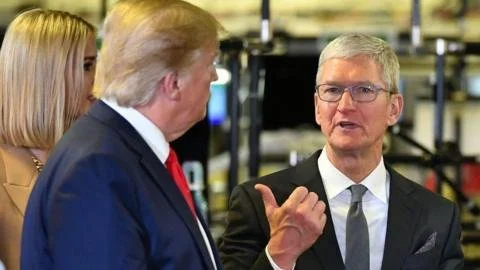Apple's $100 Billion Gamble: Turning Tariff Pressure into Domestic Power
Apple is making a bold move by boosting its investment in the United States by an additional $100 billion, responding to the escalating pressure from President Donald Trump. This investment is aimed at enhancing the domestic production of Apple parts and complements the company’s earlier commitment of $500 billion to spend in the U.S. over four years.<br><br>Following Trump’s earlier threats to impose tariffs on Apple products unless the company shifted its iPhone manufacturing back to the U.S., Apple CEO Tim Cook indicated the desire to “do more” to mitigate impending tariffs. In a high-profile event at the White House, Trump praised Apple for increasing its investment to create a more self-sufficient supply chain domestically, which would also include new data centers and a smart glass production line in Harrisburg, Kentucky, used for iPhones and smartwatches. This shift is expected to help Apple avoid a hefty proposed 100% tariff on chips and semiconductors.<br><br>Trump’s administration portrayed this investment as a significant win for America’s manufacturing industry, emphasizing its role in reshoring production which is vital for the country’s economic and national security. Cook, continuing his cooperation with Trump, mentioned that previous investments had started yielding positive results for Apple.<br><br>Despite these bold commitments, analysts cautioned that changes to Apple’s supply chain would not occur overnight. While Apple has diversified its manufacturing by sourcing goods from India and Vietnam to evade tariffs, it still faced substantial costs due to new border taxes resulting from the ongoing tariff war. During a recent earnings call, Cook highlighted ongoing initiatives like a manufacturing academy in Michigan and investments in rare earth magnets from a U.S. producer, showcasing Apple’s effort to support American production. <br><br>While the excitement around this news has had a positive impact on Apple’s stock, analysts are left questioning the feasibility of such an abrupt change in Apple’s complex manufacturing processes. The challenge remains substantial, with many components that go into Apple devices still largely produced overseas. The market will be closely watching how Apple navigates these new demands and whether it can sustain its ambitious targets amid political and economic pressures.

